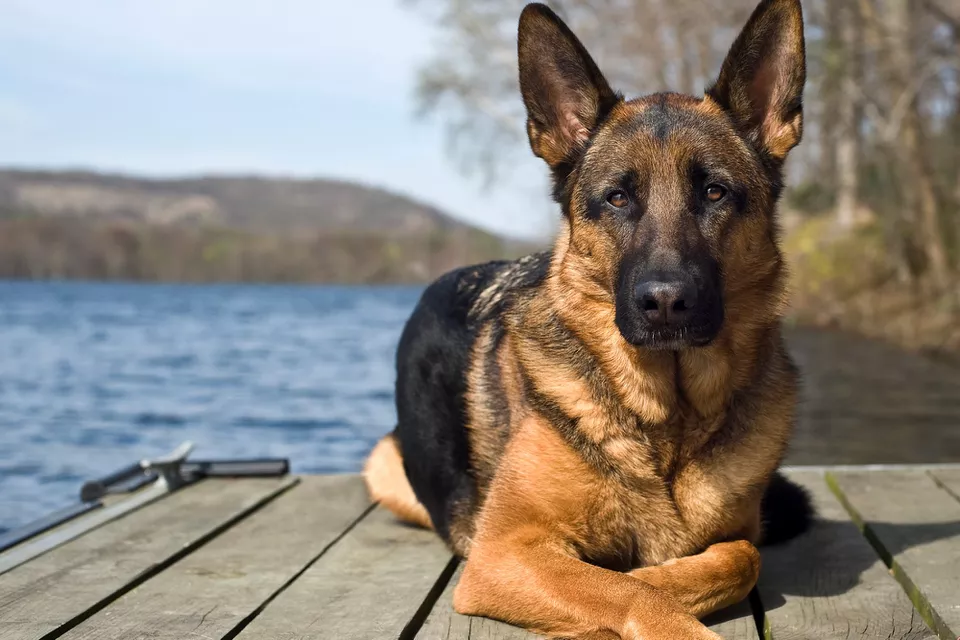From dainty Pomeranians to majestic Leonbergers, German dog breeds are renowned for their intelligence, tenacity, and remarkable efficiency in getting the job done.
From cherished German Shepherds and majestic Great Danes to the clever Poodles and charming Dachshunds, Germany has bestowed upon the United States a bounty of beloved dog breeds. Remarkably, half of America’s top 10 most popular dog breeds trace their roots to Germany.
The appeal is evident: if you seek a diligent and exceptionally intelligent canine companion, German dog breeds stand out. Throughout history, Germans purposefully bred dogs with a dedicated and efficient work ethic, each breed serving a specific function in society.
Jerry Klein, DVM, the chief veterinary officer of the American Kennel Club, illuminates the historical significance of German dogs, transcending socio-economic boundaries from farmers and peasants to the affluent. These versatile canines, meticulously bred to fulfill specific societal needs, found their place across the spectrum. Larger breeds excelled in tasks such as bear hunting and guard duties, while their smaller counterparts showcased prowess in waterfowl retrieval and pest control.
Reflecting on the diversity of German dogs, Klein emphasizes the common thread that binds breeds like the Affenpinscher, Dachshund, German Shepherd, and Rottweiler: a shared commitment to purposeful work and functionality. Each breed, regardless of size or appearance, had a defined role to play, rooted in its inherent abilities. For German dogs, function was the driving force shaping their unique roles in society.
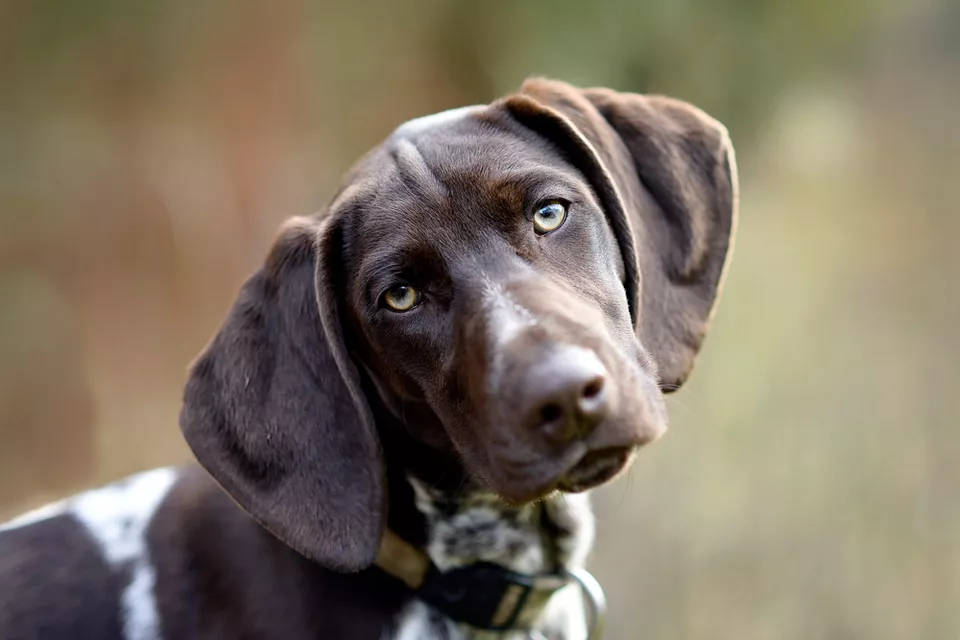
German Shorthaired Pointer
In the enchanting era of the late 1800s, German dog enthusiasts embarked on a quest to craft a canine prodigy, a wonder pup boasting an innate flair for diverse hunting pursuits. Through generations of deliberate breeding, the German Shorthaired Pointer emerged as the epitome of a family companion, gifted with a tapestry of natural talents. Fondly known as GSP, these dogs, according to the German Shorthaired Pointer Club of America, were meticulously bred to “point, retrieve, trail wounded game, and hunt both large and small game” across challenging landscapes.
Formally anointed by the AKC in 1930, the GSP stands as a contemporary icon among dog breeds, celebrated not only for its prowess in hunting and tracking but also as the ideal partner for outdoor enthusiasts. With boundless energy and keen intelligence, the GSP embodies an unwavering enthusiasm for exploring life alongside its human pack. Their affectionate and eager-to-please demeanor consistently propels them to the forefront, securing their enduring status among America’s top dog breeds.
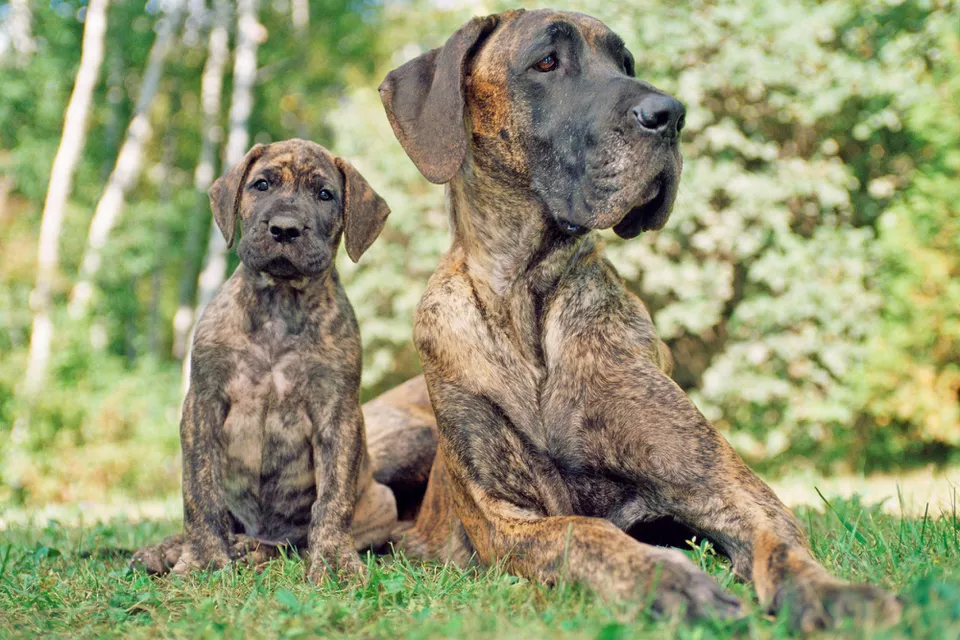
Great Dane
In the captivating tale of canine origins, the majestic Great Dane, though often associated with Denmark, unfolds its story in the heart of Germany. Fondly dubbed the “German Mastiff,” this gentle giant defies expectations with its colossal size, earning the affectionate moniker of a true gentle giant. Yet, beyond their imposing stature, Great Danes boast hearts as vast as their frames, endearing them as exceptional family companions.
Originally hailing from a lineage bred to tackle formidable challenges like hunting bears and wild boars, Great Danes gracefully evolved into the role of noble guard dogs. Their seamless blend of fierceness and affection led them to become not only protectors but also beloved companions in aristocratic circles. Acknowledging their regal presence, the AKC officially recognized the Great Dane in 1887, solidifying its enduring status as the 15th most beloved breed in the country.
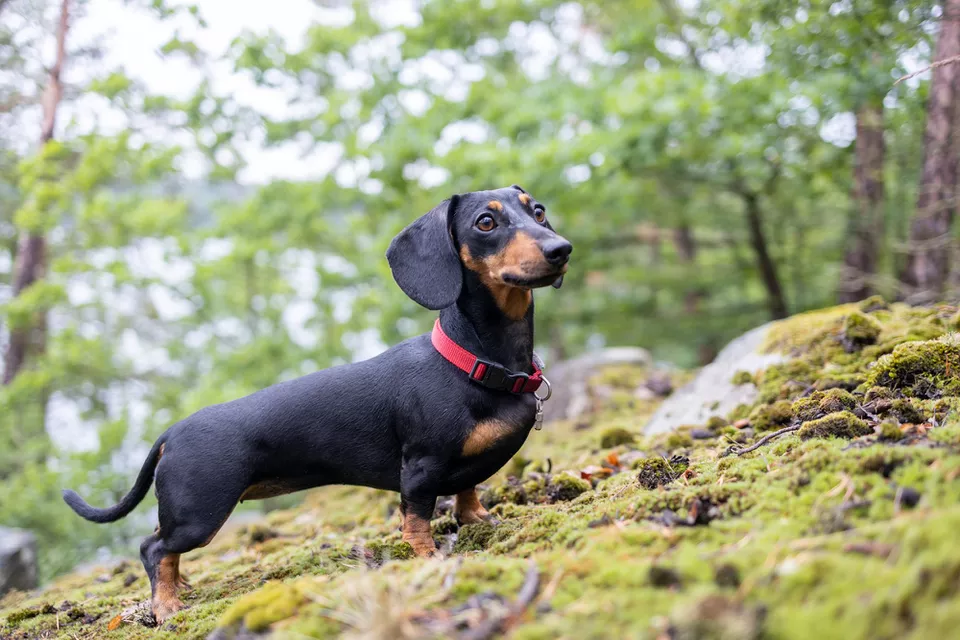
Dachshund
In the rich tapestry of canine tales, the Great Dane emerges from the heart of Germany, donning the affectionate alias of the “German Mastiff.” Beyond its colossal size, this majestic breed intricately weaves a narrative as a “gentle giant,” challenging expectations. Great Danes, among the grandest of canines, captivate hearts not just with their imposing stature but with an expansive warmth, making them extraordinary family companions.
Once bred for the daunting tasks of bear and wild boar hunting, Great Danes gracefully transitioned into the role of noble guardians. Beyond their fierce protective instincts, they embraced the aristocratic lifestyle, earning a dual reputation as both formidable protectors and affectionate companions. Bestowed with formal recognition by the AKC in 1887, the Great Dane today proudly holds its place as the 15th most esteemed breed in the country, a testament to its enduring charm and regal presence.
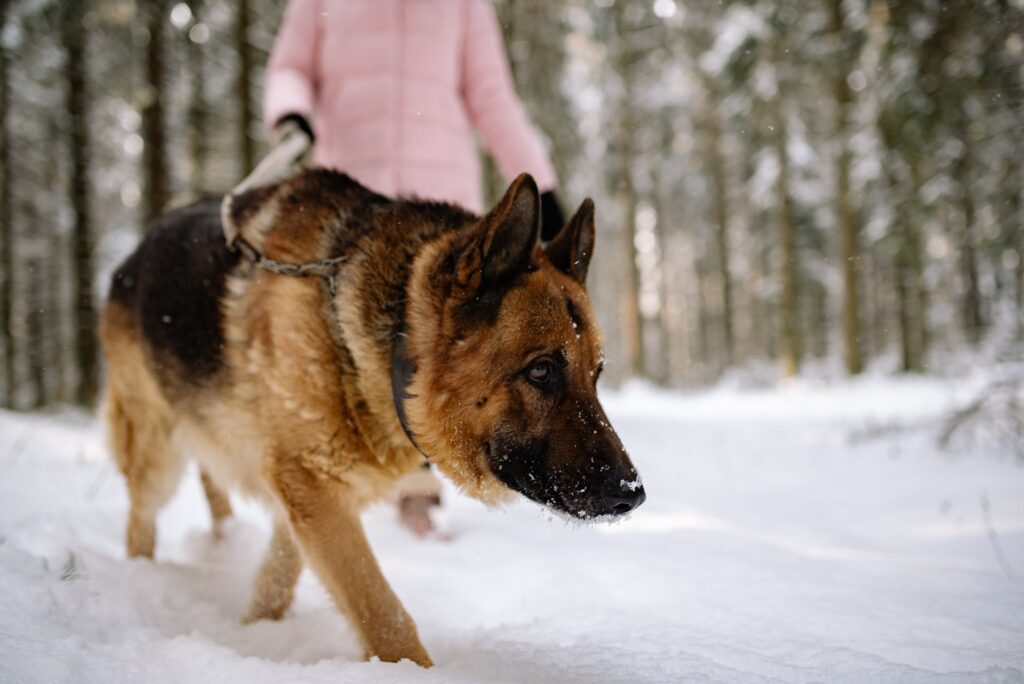
German Shepherd
In the tapestry of American pet companionship, gratitude is owed to Germany for bestowing one of the nation’s most cherished dogs: the German Shepherd. In the late 1800s, the breed’s genesis was rooted in practicality as an adept sheep herder, aligning with its namesake. Captain Max von Stephanitz, the visionary owner, embraced the mantra of “utility and intelligence” in sculpting the Deutschland dog. His deliberate efforts birthed an intelligent working dog, seamlessly adapted for roles in the military and law enforcement throughout history.
The German Shepherd made its debut on American soil in 1907, as revealed by the German Shepherd Dog Club of America, earning recognition as the 60th breed by the American Kennel Club in 1908. Today, the German Shepherd’s endearing blend of friendliness, patience, and intelligence positions it as a premier choice for families and active dog enthusiasts alike.
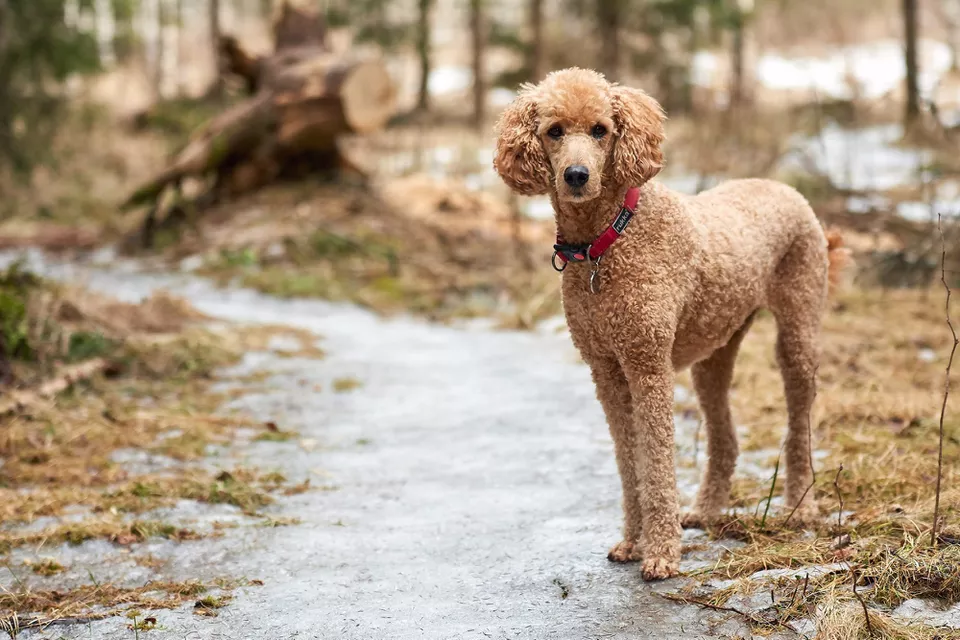
Standard Poodle
Poodles, the dazzling maestros of the canine world, have gracefully waltzed into our hearts as the result of an enchanting blend of traits. Their enchanting allure arises from a magical concoction of minimal shedding, exceptional intelligence, and a knack for swift learning. But, before these regal creatures became the darlings of American households for their charm and demeanor, they once trod the waterlogged paths of Germany as skilled duck retrievers. Their name, “poodle,” whispers tales of playful splashes in the German word “pudelin.”
In the theatrical performance of canine wit that was the American Kennel Club’s inaugural obedience test in 1933, three standard poodles took the stage. Although a Labrador retriever stole the spotlight, the event was a symphony that echoed the poodles’ intelligence on a national scale. Today, these astute companions are hailed for their intellect and desire to please, casting a spell over tranquil households. Little wonder they pirouette gracefully into the 6th spot on the nation’s list of beloved dogs, leaving an indelible paw print on our affections.
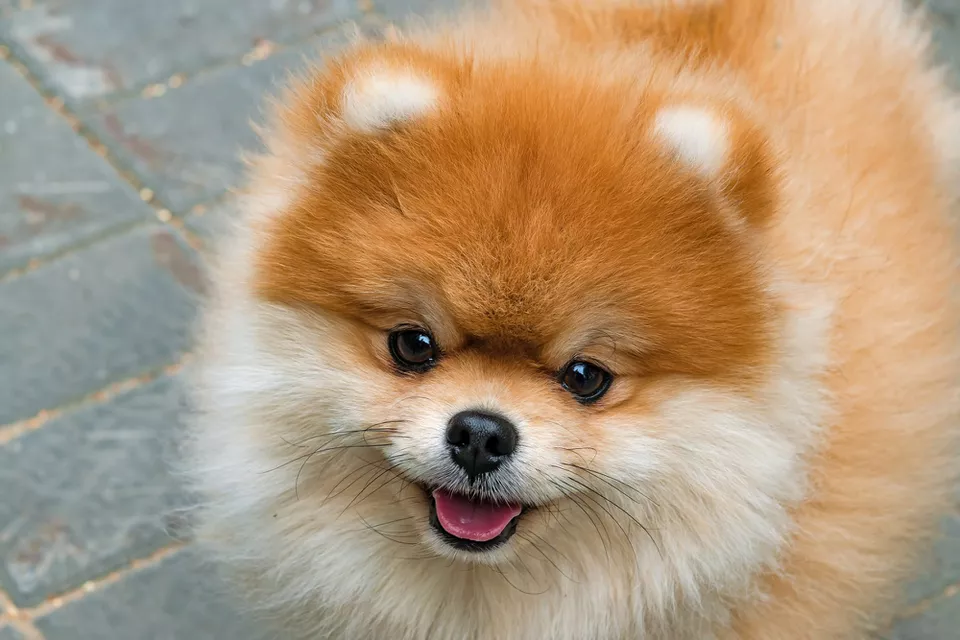
Pomeranian
The delightful Pomeranian, a pocket-sized dynamo, carries within its tiny frame the legacy of larger-than-life sled dogs and formidable guardians. Don’t be fooled by its petite stature—these fluffballs boast personalities as spirited as their mighty forebears. The Pomeranian proudly wears its name, a nod to the enchanting region of Pomerania, now a charming blend of Poland and western Germany. Imagine, from these roots, a regal transformation occurred, turning these little wonders into the chosen companions of royalty, including the esteemed Queen Charlotte and Queen Victoria in the late 1800s.
Fast forward to 1900, and the American Kennel Club officially welcomed the Pomeranian into the spotlight. Since then, these pint-sized charmers have skyrocketed in popularity, claiming the 23rd spot among the eclectic mix of canine companions in the U.S. But there’s more to these fur-flaunting divas than meets the eye—beyond their glamorous exterior lies emotional intelligence and a knack for quick learning, making them not just adorable lap dogs but also cherished emotional support companions. Embrace the lively and inquisitive energy of the Pomeranian; it’s a whirlwind of fun, ensuring owners embark on a thrilling journey of training and bonding activities to keep up with these captivating fur companions.
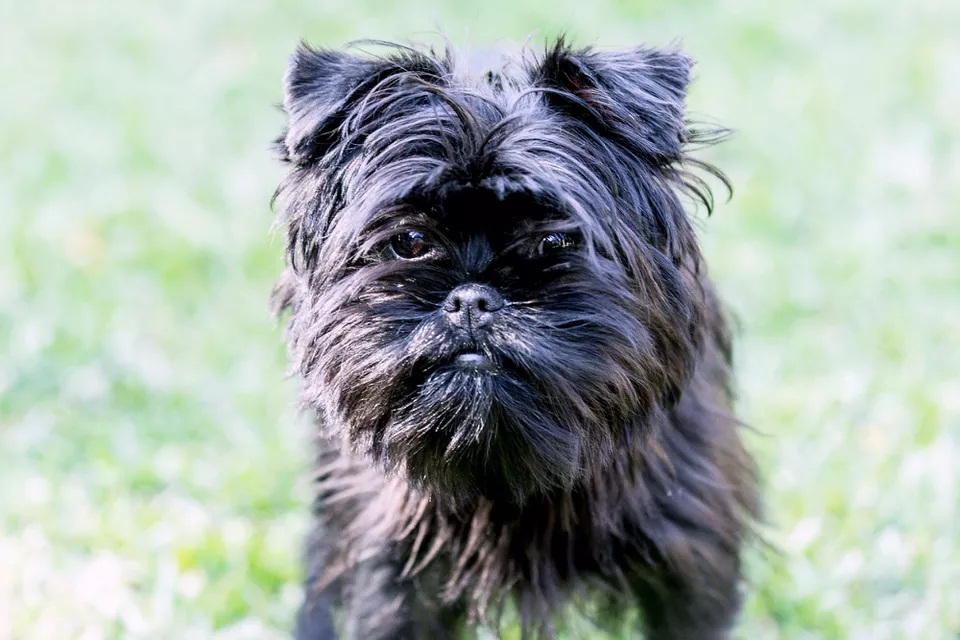
Once mighty hunters of mice and rats, the affenpinschers may be tiny, but their ferocity is nothing short of legendary. Picture this: in 1600s Germany, these remarkably intelligent canine marvels served as enthusiastic pest exterminators, showcasing their skills in the art of vermin control, as noted by the American Kennel Club. Surprisingly, despite their formidable hunting abilities, they were also renowned for their affectionate nature, becoming cherished companions within the families they dutifully served. A whimsical twist to their tale, perhaps inspired by their cuddly demeanor and adorable, round faces, lies in their German moniker – “affenpinscher,” translating to “monkey dog.”
Fast forward to 1936, and the American Kennel Club officially welcomed these diminutive dynamos into the spotlight. While they may not claim widespread fame today (ranking 163 out of 195 in popularity), affenpinschers are unsung heroes, excelling as loyal companions, particularly adored for their compatibility with children and families. Prospective affenpinscher owners are in for a treat, as these pocket-sized wonders promise a lifetime of curiosity, profound intelligence, and bold attitudes that add a delightful spark to any household.
Affenpinscher
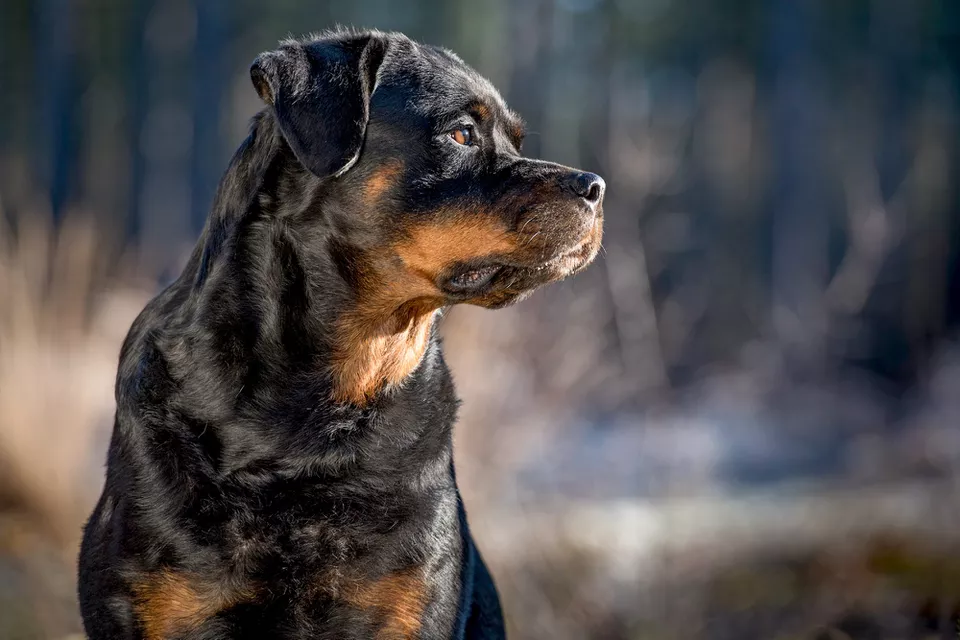
Rottweiler
In the rich tapestry of canine history, the Rottweiler emerged in Germany with the moniker “Rottweiler Metzgerhund,” a title that resonates with its role as the “Butcher’s dog of Rottweil.” Picture this: their ancestral duty was not only to safeguard but also to herd cattle, marking them as stalwart protectors. As these diligent dogs made their way to the U.S., their reputation for unwavering work ethic and intelligence persisted. Their valor shone in pivotal moments, such as their involvement in search and rescue missions at the scenes of terrorism attacks in Oklahoma City and the World Trade Center.
Fast forward to today, and the Rottweiler proudly claims the 8th spot on the list of America’s most beloved dogs. Rooted in history as guard dogs, they retain a formidable reputation for their protective prowess and commanding presence. Prospective owners, take note: the key to unlocking the full potential of these eager-to-please and highly intelligent companions lies in early socialization and dedicated positive reinforcement training. It’s not just a dog; it’s a partnership with a loyal and capable guardian.
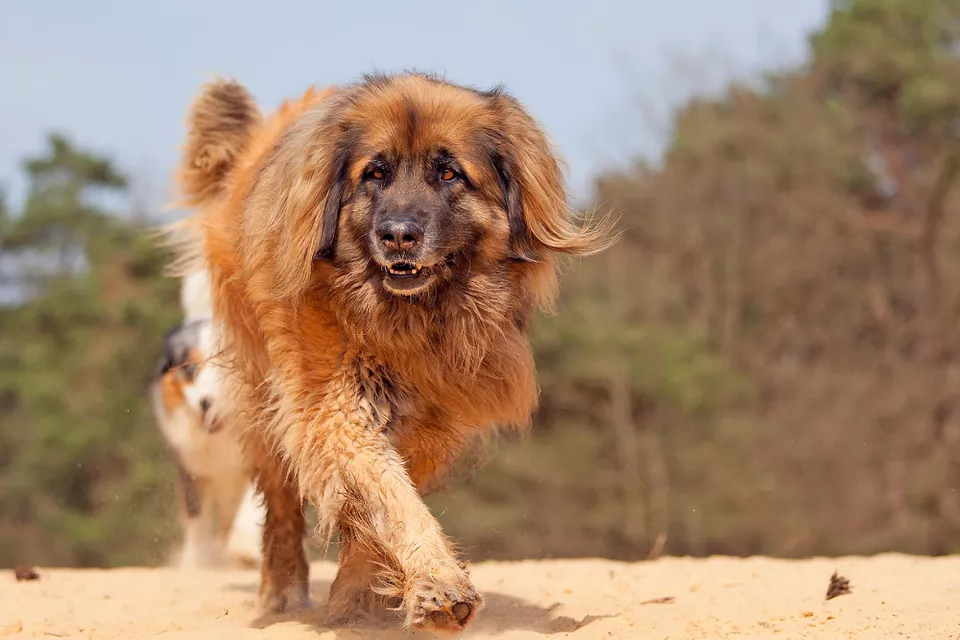
Leonberger
Meet the Leonberger, a canine marvel that’s impossible to overlook—thanks to a blend of their captivating personalities and colossal stature. Picture this: a majestic 170-pound companion with origins dating back to 19th-century Germany, where they were carefully crafted to be the ultimate partners for European royalty. But don’t let the fancy lineage fool you—these dogs seamlessly transitioned from palaces to the practicalities of daily life. Sure, they hobnobbed with the royals, yet their real contribution played out on farms and waterfronts, demonstrating an uncanny talent for cart-pulling.
While the American Kennel Club (AKC) only officially recognized these gentle giants in 2010, they’ve swiftly captured hearts, securing the 98th spot out of 195 breeds. Leonbergers are more than just massive; they’re love personified, craving social bonds with both humans and furry friends alike. Imagine inviting these big-hearted companions into your family—they’re not just pets; they’re the missing piece that completes the puzzle of a home with abundant space, both physically and emotionally.
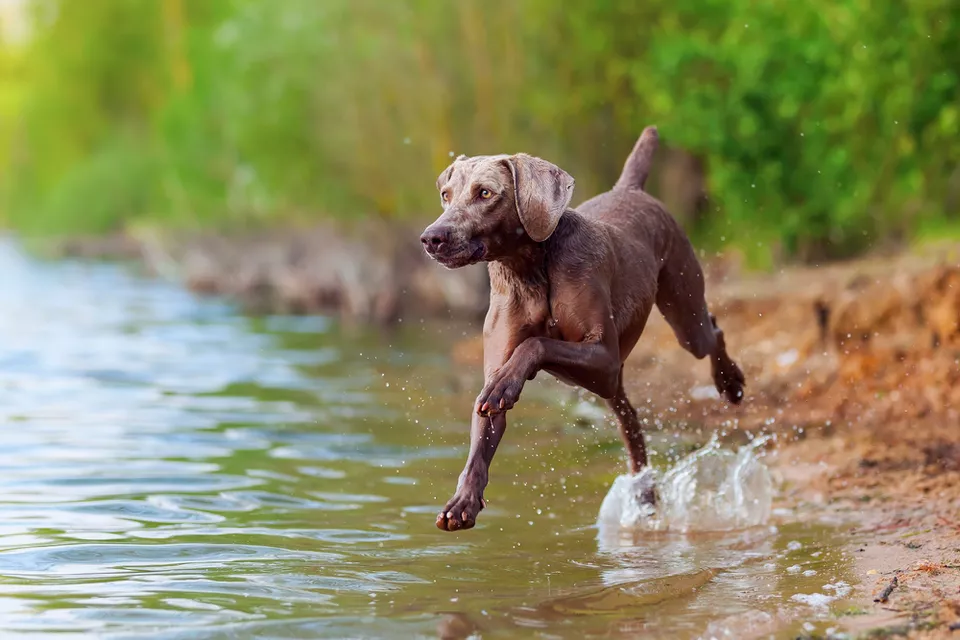
Weimaraner
Introducing the enigmatic silver-gray Weimaraners, once the nimble hunting comrades of 19th-century German pursuits, tracking bears and mountain lions with an unparalleled zest. Evolving into adept tracking dogs, these intelligent companions harbor a profound love for staying in the human orbit—preferably with individuals possessing the time and dynamism to immerse them in engaging training sessions and activities that spark their curiosity.
While the American Kennel Club (AKC) officially acknowledged the Weimaraner in 1943, their surge in popularity in the U.S. achieved its zenith when President Dwight Eisenhower welcomed his own Weimaraner into the esteemed halls of the White House. The Weimaraner’s ascent to modern stardom was further propelled by notable figures like Grace Kelly, cementing its status as the 36th most cherished canine companion in the nation. These aren’t just dogs; they’re silver shadows of history, seeking a companion ready to explore the depths of their intelligent, adventurous spirit.

American Eskimo
Behold the paradox of the American Eskimo—despite its patriotic label, these enchanting dogs crossed the Atlantic in the early 1800s, cradled in the arms of German immigrants. Originally farmhands with their fluffy white coats, these canine virtuosos later stole the show as star attractions in traveling circuses. Picture it: a furball of German heritage captivating audiences under the big top, a tale spun with the signature double coat shared by kin like the German Spitz and Pomeranian.
While their fluffy legacy has deep roots in American soil, it took until 1995 for the American Eskimo to earn a nod from the AKC. Beyond the charming facade, these bright minds boast a claim to fame as one of the most trainable breeds. Their hearts beat for high-energy environments, making them not just pets, but spirited additions to families that embrace an active lifestyle—a unique blend of German roots and American allure.
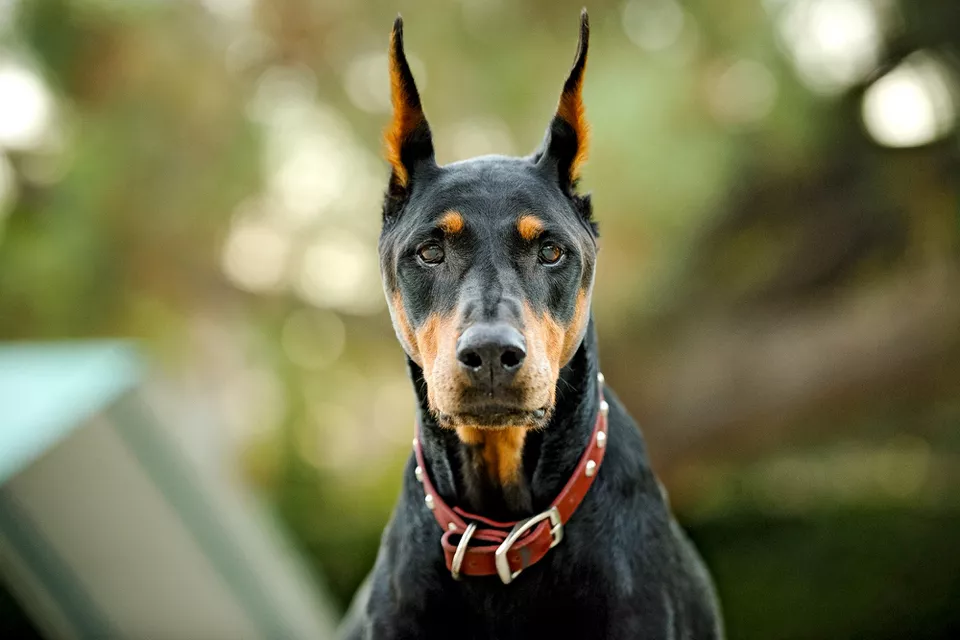
Doberman Pinscher
Meet the Doberman Pinscher, once the vigilant protector of a tax collector in the heart of Germany. Renowned as “velcro dogs,” these four-legged companions have perfected the art of sticking close to their owners, necessitating a touch of behavioral finesse to ward off separation anxiety during human absences.
But beyond their guardian legacy, the Doberman Pinscher is an extraordinary confidant—a best friend of unparalleled devotion. Acknowledged by the AKC in 1908, this breed consistently claims a prestigious spot among the nation’s top 20 most beloved dogs. Picture it: a sleek, attentive companion, embodying both the noble history of German guardianship and the contemporary charm that lands them in the hearts of dog lovers nationwide. The Doberman Pinscher, not just a pet, but a fascinating chapter in the story of canine companionship.
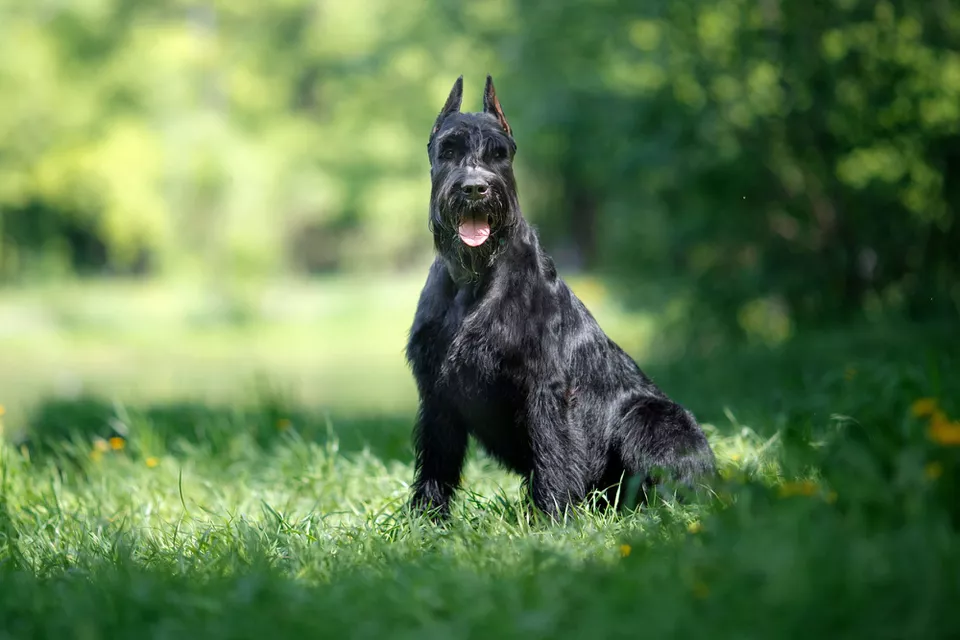
Giant Schnauzer
Behold the Schnauzer trio—miniature, standard, and the mighty giant, each with its own charisma. Picture the giant Schnauzer, a German gem celebrated not just for its size but for a brain as sharp as its Schnauzer beard. Born in the scenic Bavarian Alps in the mid-1800s, these giants started as cattle herders and guardians of livestock, only to evolve into Europe’s trusted police and military aides.
Fast forward to the roaring 1920s when the giant Schnauzer set its paws on American soil, bringing with it an energy that’s both invigorating and trainable. These canine virtuosos, thriving with stimulation, often prefer the limelight as the sole four-legged star in a household.
While training may demand dedication, experienced dog owners who embrace the challenge will discover a love affair with those signature Schnauzer beards, expressive eyebrows, and brains that could outsmart a chess grandmaster. Meet the giant Schnauzer—more than a pet, a symphony of history, intelligence, and an irresistible dash of facial flair.
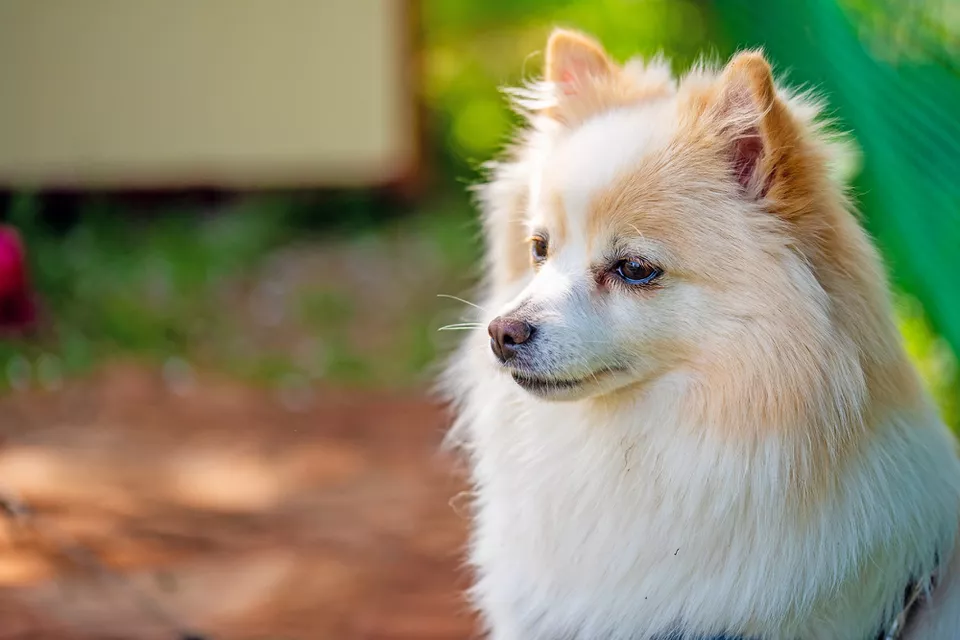
German Spitz
Step into the captivating world of the German Spitz, a majestic kin to the whimsical Pomeranian, but with a flair that tips the scales between 24 to 26 pounds. Picture this: not just one, but three sizes—small, medium, and large—each adorned with the iconic fluffy double-coat that has become a symbol of canine charm in Pomeranian-loving households across America.
Embark on a journey through history, where the German Spitz, with its acute hearing, once stood guard as a maritime watchdog. Fast forward to the present, and this seafaring sentinel has transformed into a devoted companion, boasting a surprisingly low prey drive. However, beware the unexpected crescendo of high-pitched barks, capable of turning routine moments into a surprise symphony—keeping mail-delivery workers and unsuspecting visitors on their toes. The German Spitz: a tale of size, fluff, and the unexpected crescendo of canine charisma.

Small Münsterländer
Dive into the enchanting history of the Small Münsterländer, a German gem originally bred for hunting and retrieving, evolving gracefully into a treasured companion of the heart.
These intelligent beings are not just four-legged family members; they’re water enthusiasts with an unyielding spirit for completing tasks. Picture a furry dynamo thriving on engagement, making them the ultimate partners for those aspiring to master the art of dog training or individuals with a zest for an active lifestyle.
Now, don’t be misled by the name; the “Small” Münsterländer is far from a petite package. This medium-sized marvel, weighing in at 40 to 60 pounds, defies expectations. And here’s a delightful twist: they share no kinship with the Large Münsterländer.
These are tales of two breeds, separate but both rooted in the captivating backdrop of Münster, Germany, each scripting its own narrative in the grand tale of canine companionship. Welcome to the unique world of the Small Münsterländer—where history, intelligence, and companionship converge in a symphony of paws and hearts.
